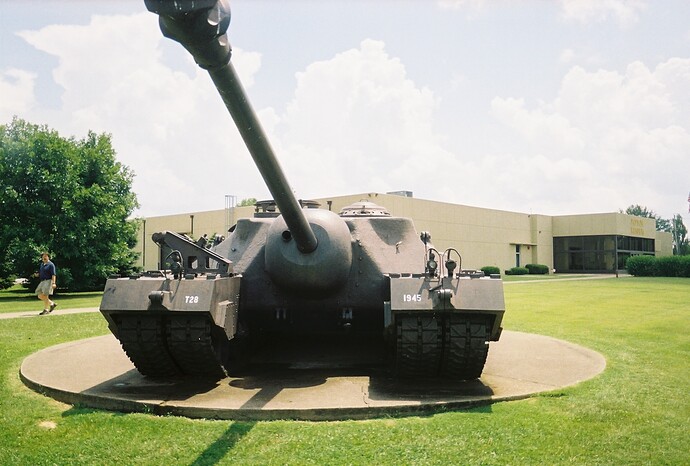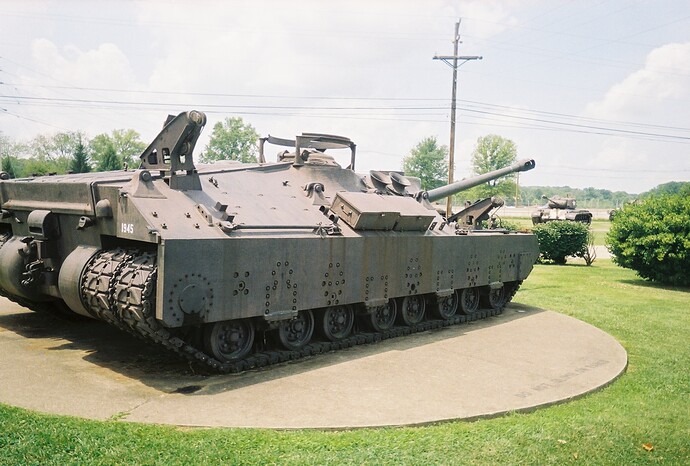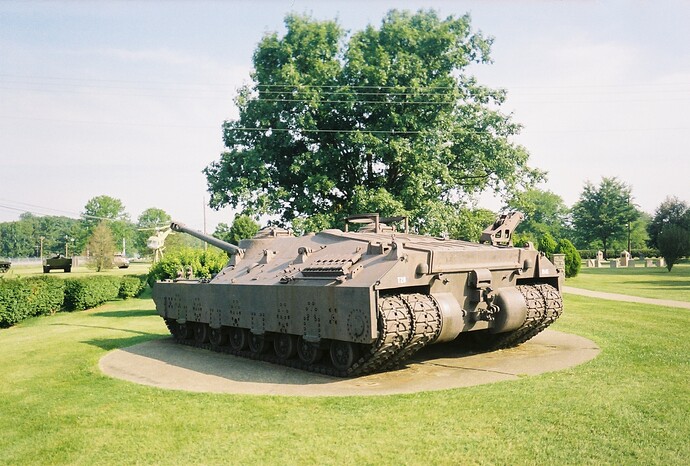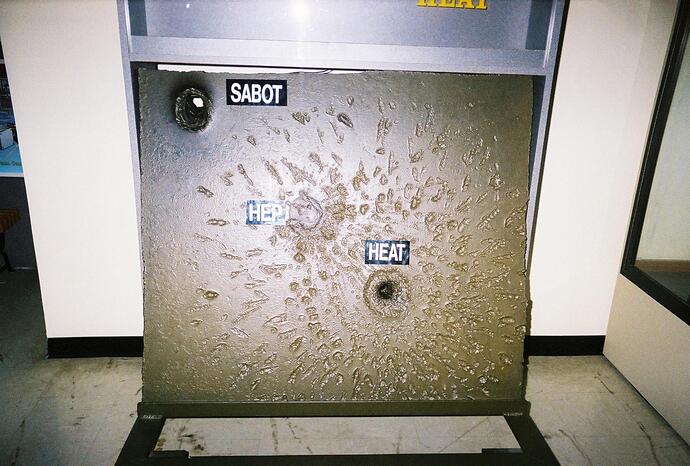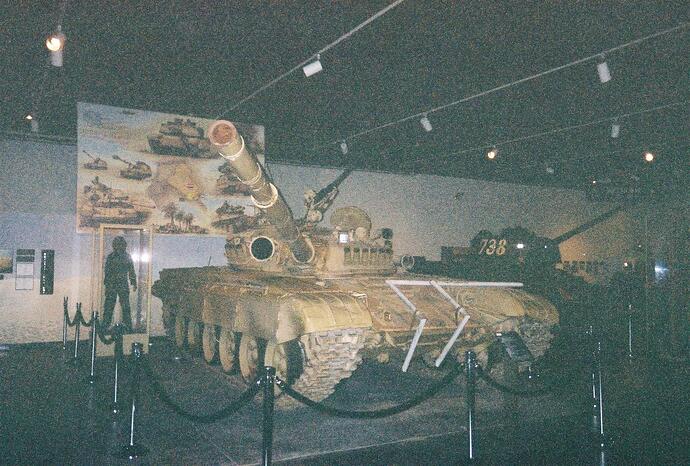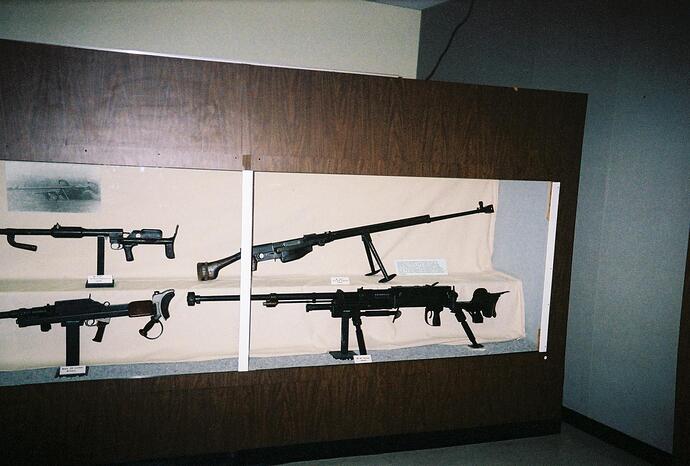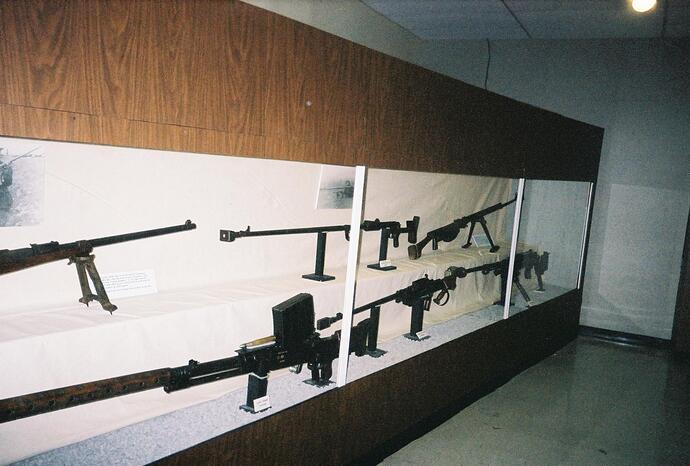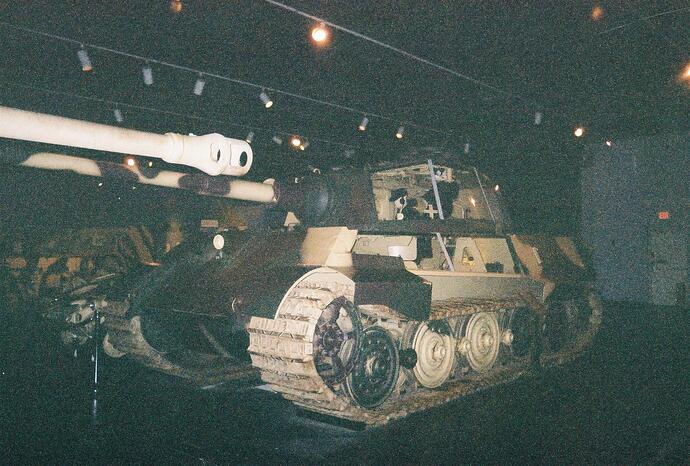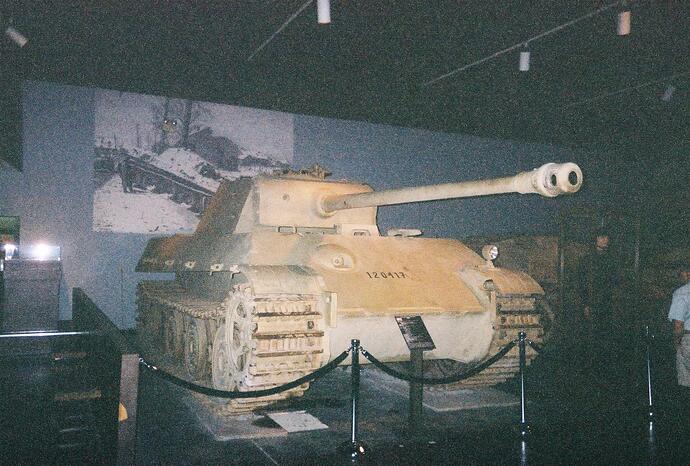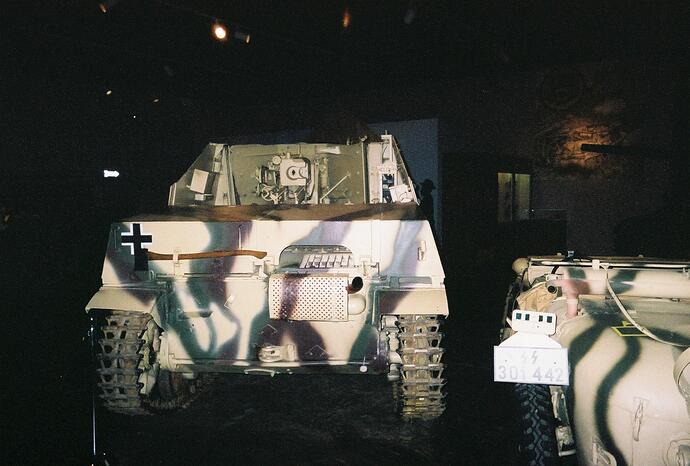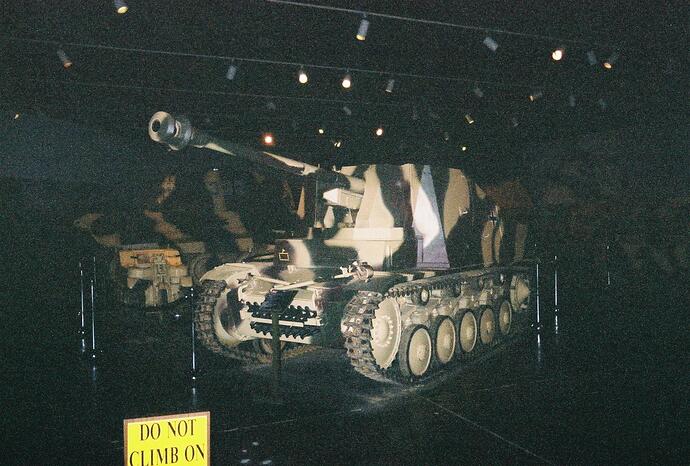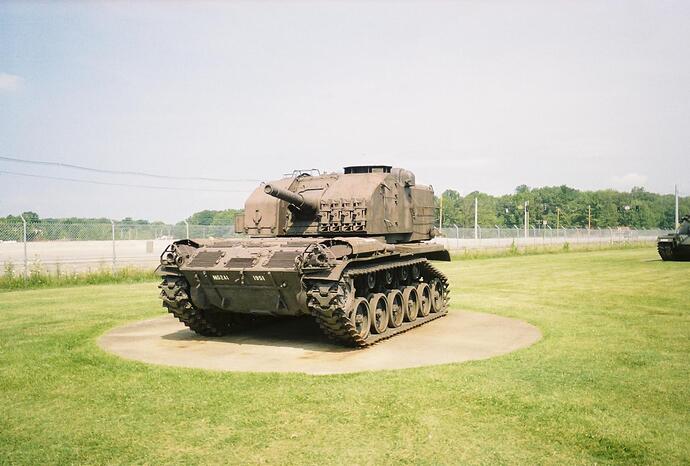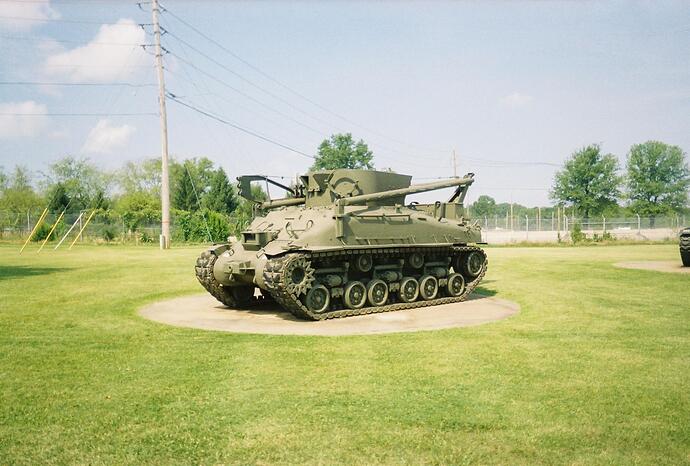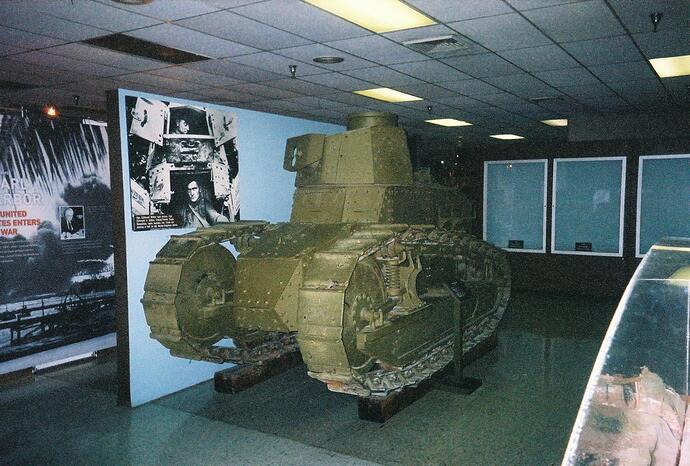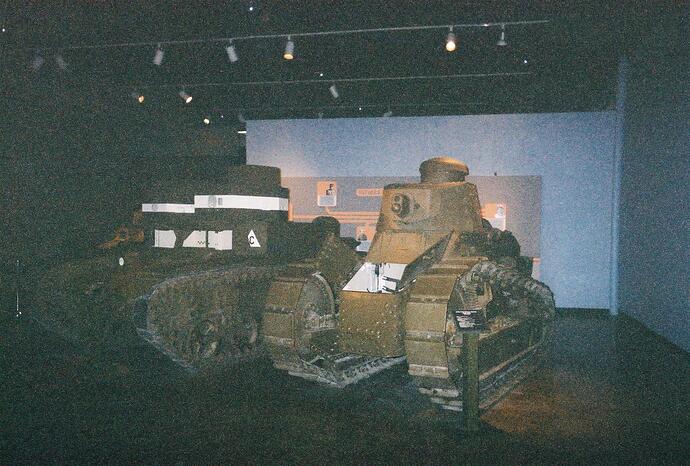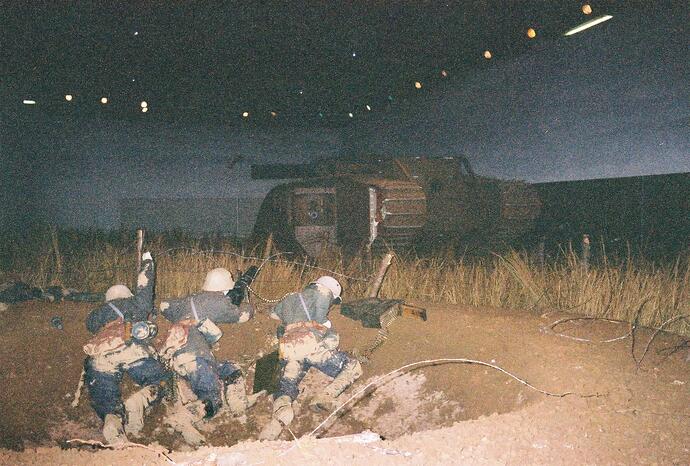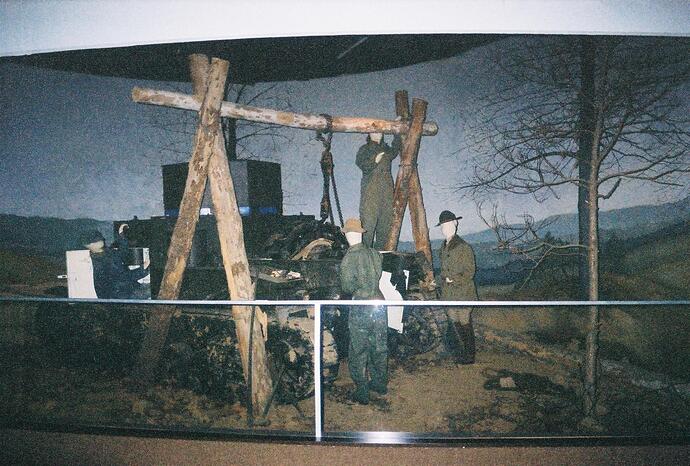I took a bike ride down to the patton Museum in Kentucky, and found the last and lonely T-28 on display there. This is one very massive machine, and in itself was worth the trip to see it. The pics do not convey the immenseness and gravity of the thing, but if it helps, the side skirt armor is 100 mm thick. Its locked up, so I could not get a look inside, But I do hope they restore this one, I’d love to see it run. enjoy the pics. - Raspenau -
I’m working where they found it, in the middle of the woods at an abandoned Army range and engineer vehicle testing facility (in 1974)…
Thanks for the pics! Fearsome looking isnt it! :twisted:
It sure is, as we used to say in the Army, its a “pee bringer” . I’ll be posting other exhibits in their proper areas soon.
Here is another pic from the Patton Museum, showing the results of being struck by the 3 most common rounds in the M-60 series tank basic load.
The Sabot, is the disgarding sabot anti-armor kinetic penetrator, carbide, velocity of about 5,000 fps.
The Heat, a shaped charge anti armor round, lower velocity than the sabot, but since its chemical, speed isnt an issue.
The Hep, (high explosive, plastic) is for general H.E. applications, and in some cases, is armor defeating, by crushing up against the armor, detonating, and causing a scab of steel to spall from the interior surface of the plate, causing damage, and injury.
The Target plate was nearly 5 in. (125mm.) thick, so the HEP didnt cause any spalling in this case, and barely dented the impact side. perhaps a few mm. The Sabot, did its usual, fine job, singing merrily through the plate, and the Heat round did as well, with its pretty pattern of spatters.
There was no info as to the range, or angle of the plate, the M-60 used a 105mm rifle. the Heat round is fin stabilized, and the other 2 (at that time,) were spin stabilized.
Patton Museum is right close to Ft. Knox yea? How far outside Louisville is that?
Would it have been viable? Its a sort of super Stug.
Interesting , the H.E.P must be the american variant of the british H.E.S.H.
The Museum is on the post, right at the edge, there is a separate parking area accessible from Hwy 31W, so you do not have to go on the post to get to it.(but you can if you need to. ) The museum is about 25-30 miles south of Louisville on 31W Dixie highway. If you wish to visit, call ahead to the motels for lodging, as during summer months the ROTC folks are in town, and use up most of the available rooms. The museum is free to enter, and has a nice gift shop if you fancy a momento. They have an stug there that was pulled out of a bog, in 1995, and looks pretty nice for being sunk all those years.
The t-28 was designed for breaking fortified positions, particularily the Siegfried line. in that roll it would have done well if properly supported. There wasnt time get them into production, and deliver them to the field in time to do that job, so the project was cancelled. A couple hundred of these in an assault would be something to see.
Pretty much it is, the Hesh has a metal mesh “bag” that holds the explosive, and controls the squash up to the target. The HEP is just a thin metal case, that peels I am told, like a banana upon impact. It has a very low velocity, around 2,800 fps, and high trajectory. the filling was 22 lbs of Comp. B
The best use was against the turret sides, where the steel is thinnest, there it does a fair job of causing a scab to blow in, but that was on cast armor. Dont know if it would behave the same with rolled armor.
I have a pic of a T-72, with a T-34 in the background, the 72 was taken from Saddam, I remember the 72’s being described as a real threat to the M-60’s of those years. Not sure if it was true, but its all history now. sorry for the picture quality, not much flash available.
The Patton museum has a small display of A.T. rifles, from lower right, to left,20mm Japanese Type 97, UK Boys .55 rifle, 20mm Finn, Lahti,
upper right to left,
1941 Siminov 14.5mm, another siminov, dont recall the caliber. German 13mm mauser bolt rifle,
Sorry for the crampt shot, but this was a narrow corridor.
This is a vehicle in as found condition, washed out, perhaps, but no restoration done as yet. I do not remember which model it is, but its interesting to see it in its natural condition. The museum has one other, a different model, which is fully restored. - Raspenau -
Hi.
It´s a type 97 tankette Te-Ke.
The color scheme doesn´t look original to me, but the japanese army only gave general orders for camo schemes. Many schemes were painted after the commanding officer´s preferences.
Yours
tom! 
Thanks Tom, It is possible that the vehicle was given a quickie paint job for display, that could account for the pattern, Its been there a long time. There are so many things to see there, that I lost track of what was what.
Here are some pics of the German armor exhibits at the Patton Museum. I’m sure they need no introduction.The ratty looking tank destroyer is the one rescued from a Russian bog in 1995.The left side turret, and some hull armor of the Tiger II have been removed to show the interior details, with manniken in the crew positions. I wish the pics could show just how huge these machines are.
Beautiful.
Is the paint scheme on the King Tiger and the jagdpanzer winter camouflage form the Battle of the Bulge era late in the war?
All join togheter here to aprecite best the pictured by Tankgeezer. 
These are some additional pics, I will try to keep them in some sort of order, but no promises, these are mostly american, with some Brit machines as well. again, sorry for the dark indoor pics, The 16 ton WW I tanks are both heavily pitted from machinegun fire, (most likely German “K” type 8mm.) which did not penetrate the armor plate of either tank. Although the one in Pic 4, Mid, left, did have 2 holes through the turret just under the cupola. those were larger, perhaps from the Ger.13mm rifle.The bottom pic is of a stuart derivitive having its radial aero engine removed. The last little fellah is a 6 ton tank, as you can see, not very big. i would like one for my front lawn,.

